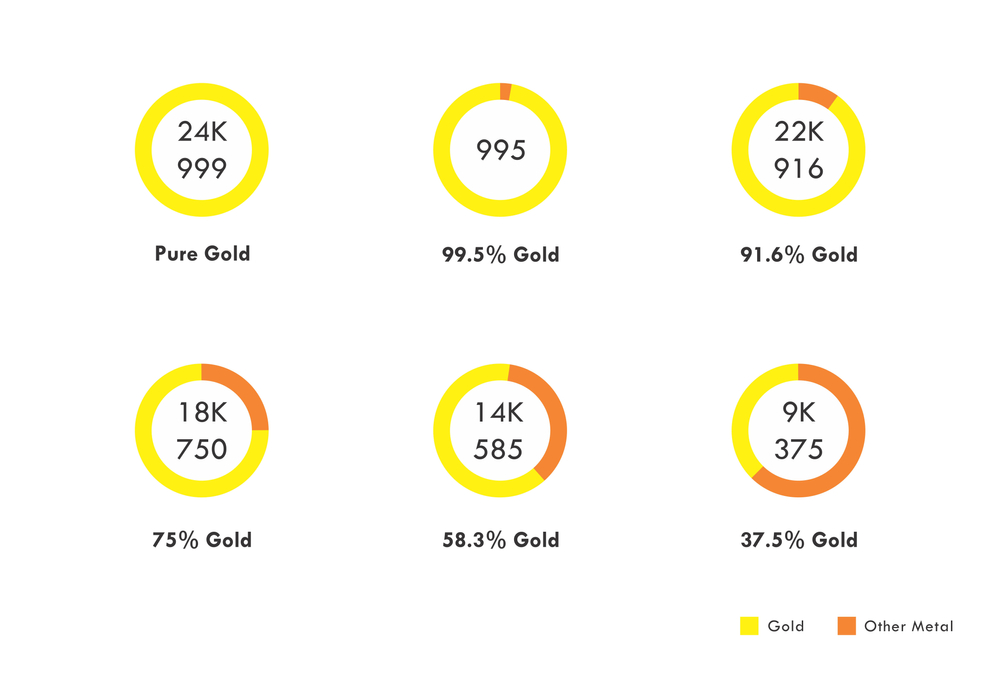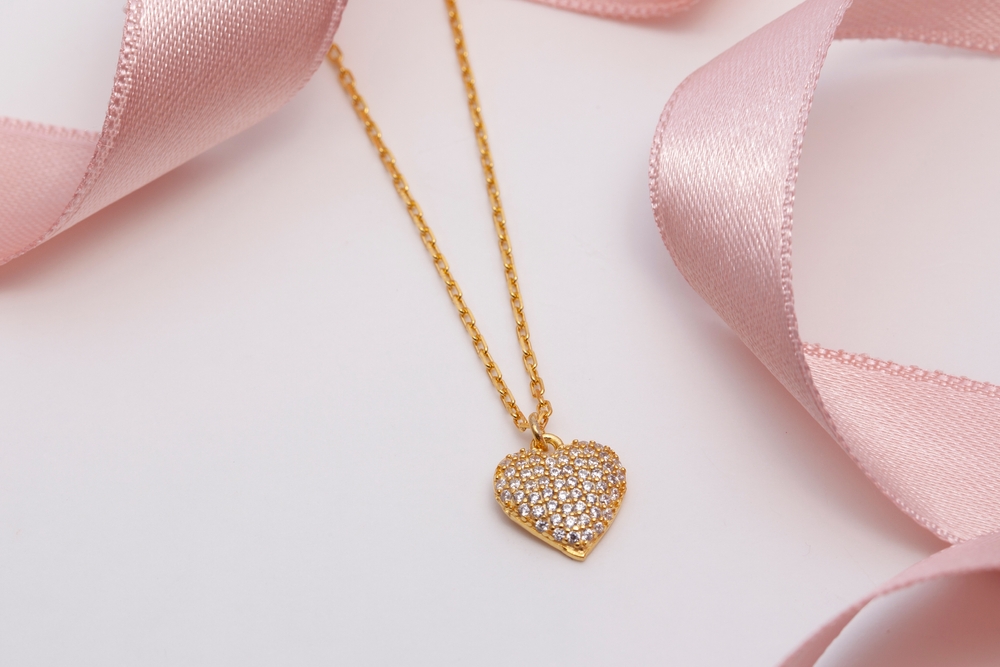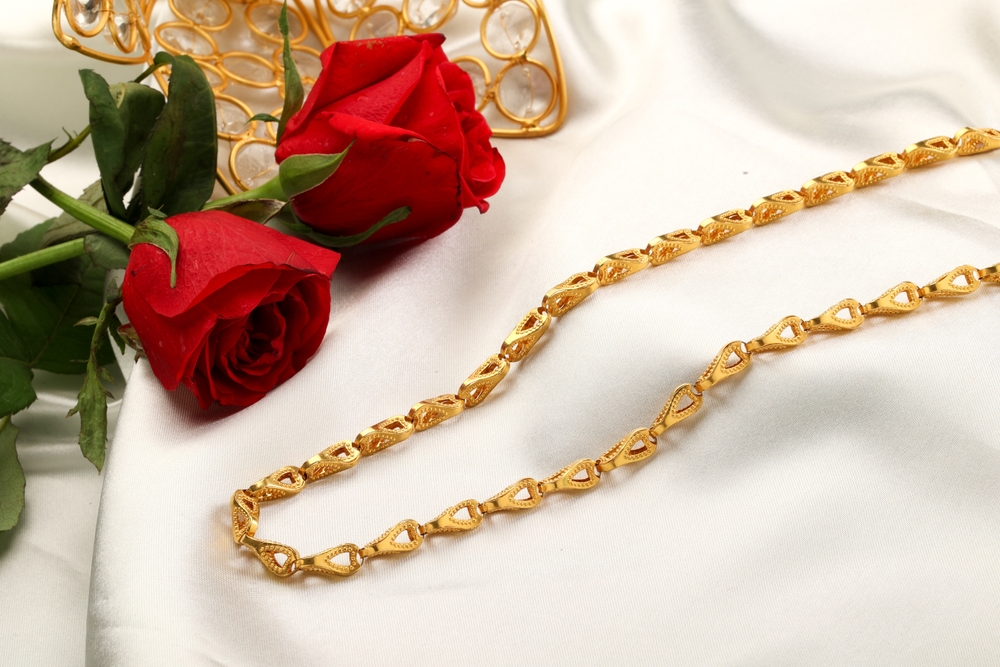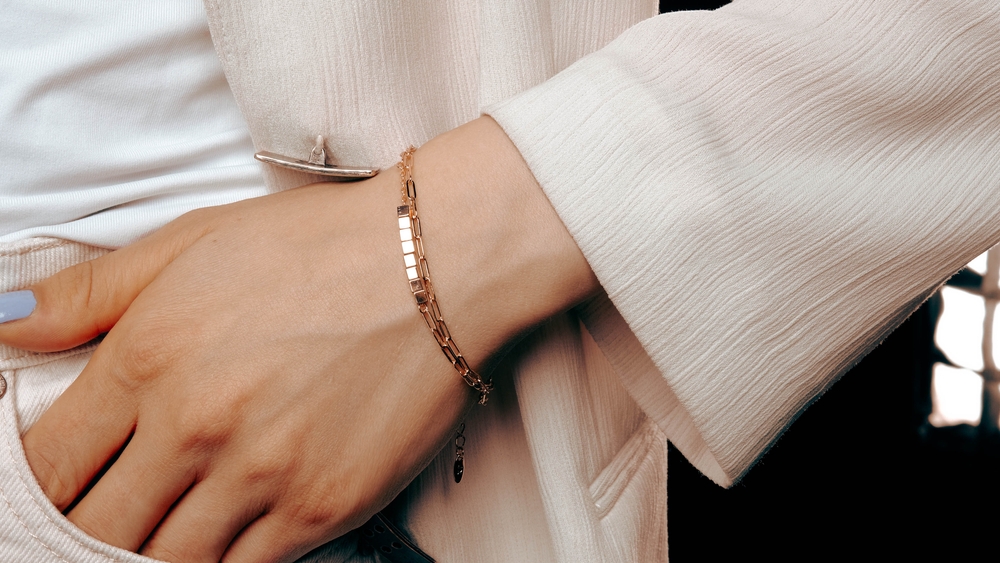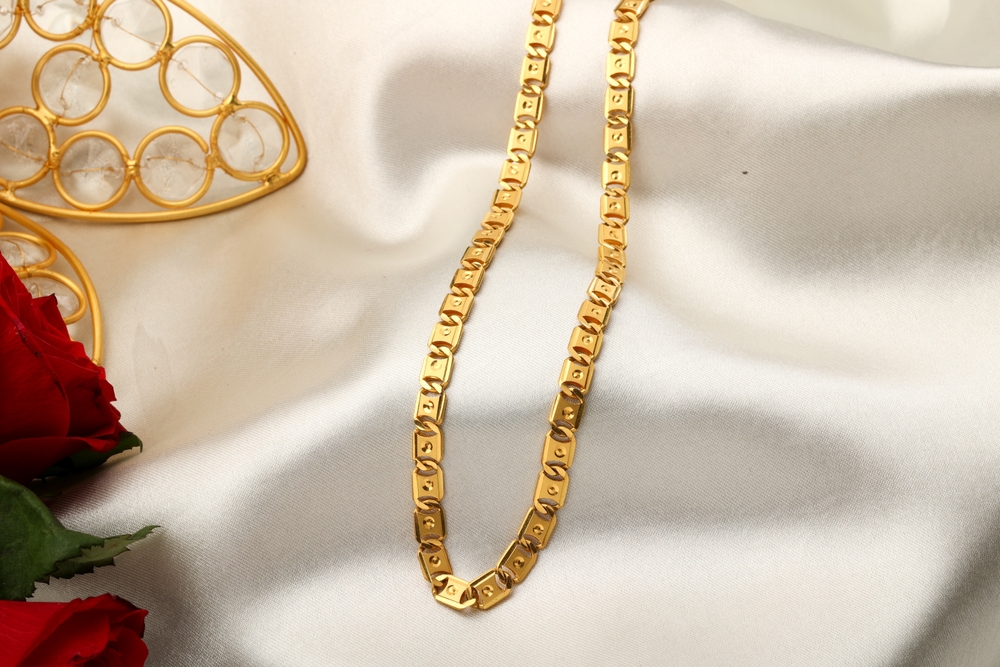Introduction
The attraction of gold has captivated the human imagination for centuries. In this comprehensive gold purity guide, we will look into the world of gold purity, explore the karat system and fineness, and demystify the various factors that influence gold’s purity. Its brilliant beauty, durability, and versatility make it a popular choice for decorations and investments. However, understanding the complexities of gold purity is crucial for making informed decisions when selecting gold jewellery or investing in gold.
This guide will provide you with the essential knowledge to make informed choices. By understanding the different measurements of gold purity and the significance of each, you can better appreciate the value and quality of your gold items. Whether you are purchasing a piece of jewellery or considering gold as an investment, this guide aims to equip you with the necessary insights to make well-informed decisions.
The Mystique of Gold
Gold has long been revered for its luxurious appeal and symbolic significance. Its value extends beyond its monetary worth, often serving as a status symbol, a token of love, or a representation of wealth. The attraction of gold is undeniable, but its purity plays a vital role in determining its value and quality. Understanding the gold purity guide is essential for appreciating the true value of gold.
Why Gold Purity Matters in Jewellery
Gold purity is a critical aspect of its quality, and it is essential to understand the karat system and fineness to make informed choices when selecting gold jewellery. The purity of gold affects its durability, aesthetic appeal, and overall value. Higher-karat gold, for instance, is often softer and more prone to scratches, making it less suitable for everyday wear. On the other hand, lower karat gold may be more durable but less valuable due to its lower gold content. This gold purity guide will help you navigate the complexities of gold purity.
Understanding Karats
The karat system is a widely used method for measuring gold purity. It is based on the proportion of gold to other metals in 24 parts. The higher the karat rating, the higher the gold content. Here are some common purity levels in gold jewellery:
24K Gold: 24 parts gold, 0 parts other metals (99.9% pure gold)
22K Gold: 22 parts gold, 2 parts other metals (91.7% pure gold)
18K Gold: 18 parts gold, 6 parts other metals (75% pure gold)
14K Gold: 14 parts gold, 10 parts other metals (58.3% pure gold)
10K Gold: 10 parts gold, 14 parts other metals (41.7% pure gold)
Decoding Gold Fineness
Fineness is another method used to measure the purity of gold. It expresses the purity of gold in parts per thousand. Pure gold has a fineness of 1000, while a lower fineness indicates a lower gold content. Here is a breakdown of the fineness system:
999.9 Fineness: 999.9 parts gold out of 1000 (99.9% pure gold)
916 Fineness: 916 parts gold out of 1000 (91.6% pure gold)
750 Fineness: 750 parts gold out of 1000 (75% pure gold)
583 Fineness: 583 parts gold out of 1000 (58.3% pure gold)
Factors Influencing Gold Purity
Several factors contribute to the purity of gold jewellery. The primary influence is the proportion of gold to other metals. The addition of other metals, such as silver, copper, and nickel, enhances the durability and strength of gold. However, these alloys can also affect the color and appearance of gold. Understanding these factors is crucial for following a gold purity guide.
The Role of Alloys in Gold Jewellery
Alloys play a crucial role in enhancing the durability and strength of gold. The most common alloys used in gold jewellery include:
Silver: Adds a bright, white color to gold.
Copper: Enhances the reddish appearance of gold
Nickel: increases the strength and durability of gold
Zinc: adds a slight yellowish tint to gold
Cultural and Regional Variations in Gold Purity Standards
Gold purity standards can vary across cultures and regions. For instance, in the UK, gold must be at least 9K to be legally sold as gold. In the United States, 14K gold is the most popular choice for fine jewellery. Understanding these regional variations is essential for making informed decisions when purchasing gold jewellery. This gold purity guide will help you navigate these variations.
Testing Gold Purity
There are several methods to test the purity of gold. Here are some traditional and modern techniques:
Traditional Methods:
Magnet Test: Gold is not magnetic, so if an item is attracted to a magnet, it is likely not pure gold.
Density Test: Gold is a dense metal, so it will sink in water.
Acid Test: A drop of acid is applied to the gold, and if it does not react, it is likely pure gold.
Modern Techniques:
X-ray fluorescence (XRF): uses X-rays to excite the atoms in the gold, emitting a characteristic X-ray spectrum that can be used to determine the gold content.
Inductively Coupled Plasma Mass Spectroscopy (ICP-MS): uses high-frequency plasma to break down the gold into its constituent elements, which are then measured using mass spectrometry.
Conclusion
Understanding gold purity is crucial for making informed decisions when selecting gold jewellery or investing in gold. The karat system and fineness provide a framework for measuring gold purity, while the addition of alloys and cultural variations can affect the purity of gold. By recognizing these factors and using traditional and modern techniques to test gold purity, you can ensure that your gold jewellery or investments are of the highest quality and value. This gold purity guide has provided you with the essential knowledge to make informed choices.
Now that you have a deeper understanding of gold purity, why not explore the world of gold jewellery with Aarchievgold Jewellers? Browse our collection of exquisite gold pieces, each carefully crafted with precision and attention to detail.
FAQs
What is the difference between karats and fineness in gold jewellery?
Karats measure the proportion of gold in an alloy, while fineness measures the purity of gold in parts per thousand. Karats are used in the jewellery industry, while fineness is used for investment-grade gold coins and bars.
How do I determine the purity of my gold jewellery?
You can use traditional methods like the magnet test, density test, or acid test, or modern techniques like XRF or ICP-MS. These methods are accurate and reliable, ensuring you know the exact purity of your gold.
Why is gold purity important in jewellery?
Gold purity affects the durability, aesthetic appeal, and overall value of the jewellery. Higher-purity gold is generally more valuable, but it can be softer and more prone to scratches.
Where can I find high-quality gold jewellery with accurate purity markings?
Look for reputable jewellers like Aarchievgold Jewellers, who provide accurate purity markings and high-quality gold jewellery. Always check for certifications from organizations like the Bureau of Indian Standards (BIS).

